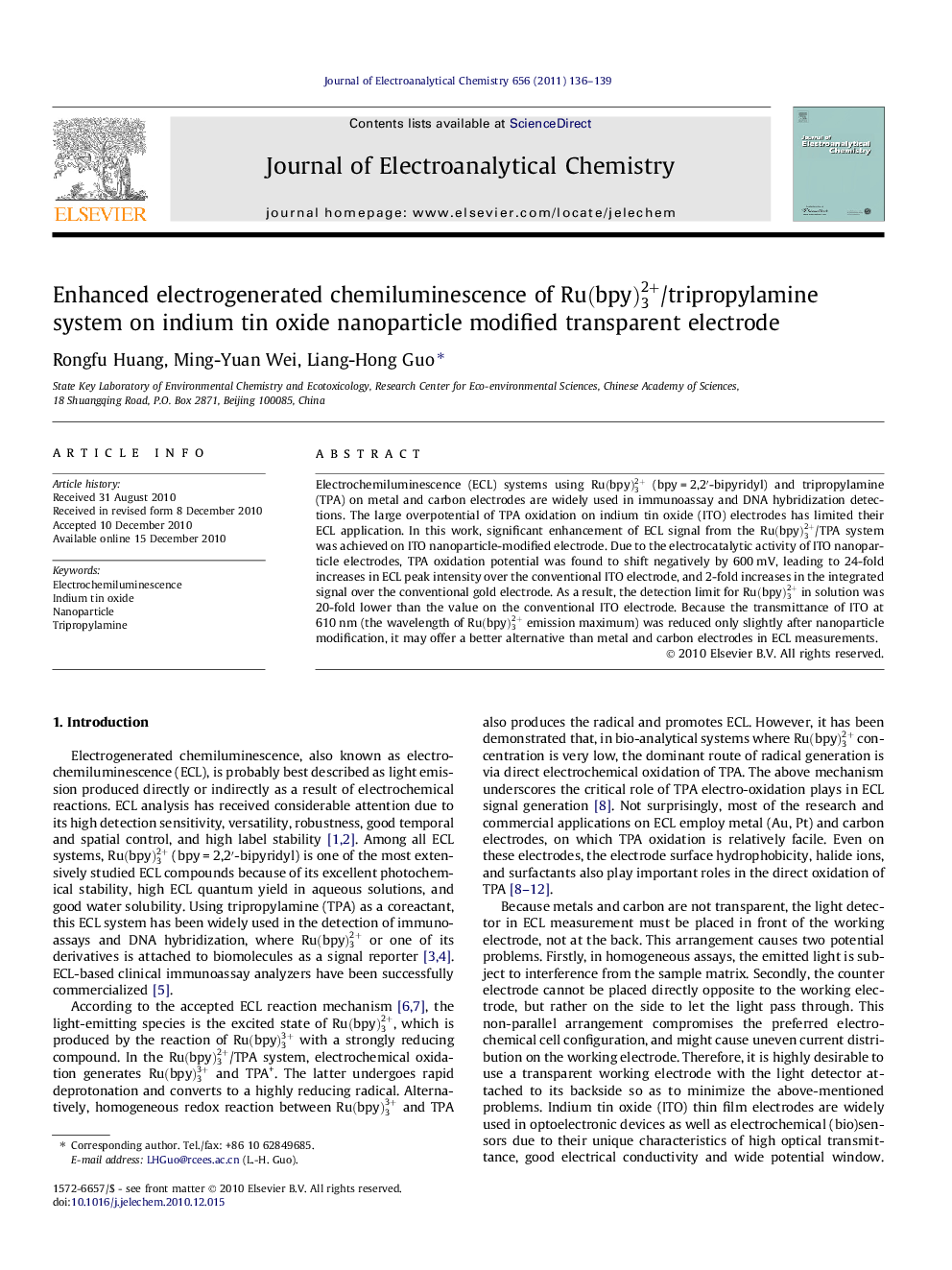| Article ID | Journal | Published Year | Pages | File Type |
|---|---|---|---|---|
| 219569 | Journal of Electroanalytical Chemistry | 2011 | 4 Pages |
Electrochemiluminescence (ECL) systems using Ru(bpy)32+ (bpy = 2,2′-bipyridyl) and tripropylamine (TPA) on metal and carbon electrodes are widely used in immunoassay and DNA hybridization detections. The large overpotential of TPA oxidation on indium tin oxide (ITO) electrodes has limited their ECL application. In this work, significant enhancement of ECL signal from the Ru(bpy)32+/TPA system was achieved on ITO nanoparticle-modified electrode. Due to the electrocatalytic activity of ITO nanoparticle electrodes, TPA oxidation potential was found to shift negatively by 600 mV, leading to 24-fold increases in ECL peak intensity over the conventional ITO electrode, and 2-fold increases in the integrated signal over the conventional gold electrode. As a result, the detection limit for Ru(bpy)32+ in solution was 20-fold lower than the value on the conventional ITO electrode. Because the transmittance of ITO at 610 nm (the wavelength of Ru(bpy)32+ emission maximum) was reduced only slightly after nanoparticle modification, it may offer a better alternative than metal and carbon electrodes in ECL measurements.
